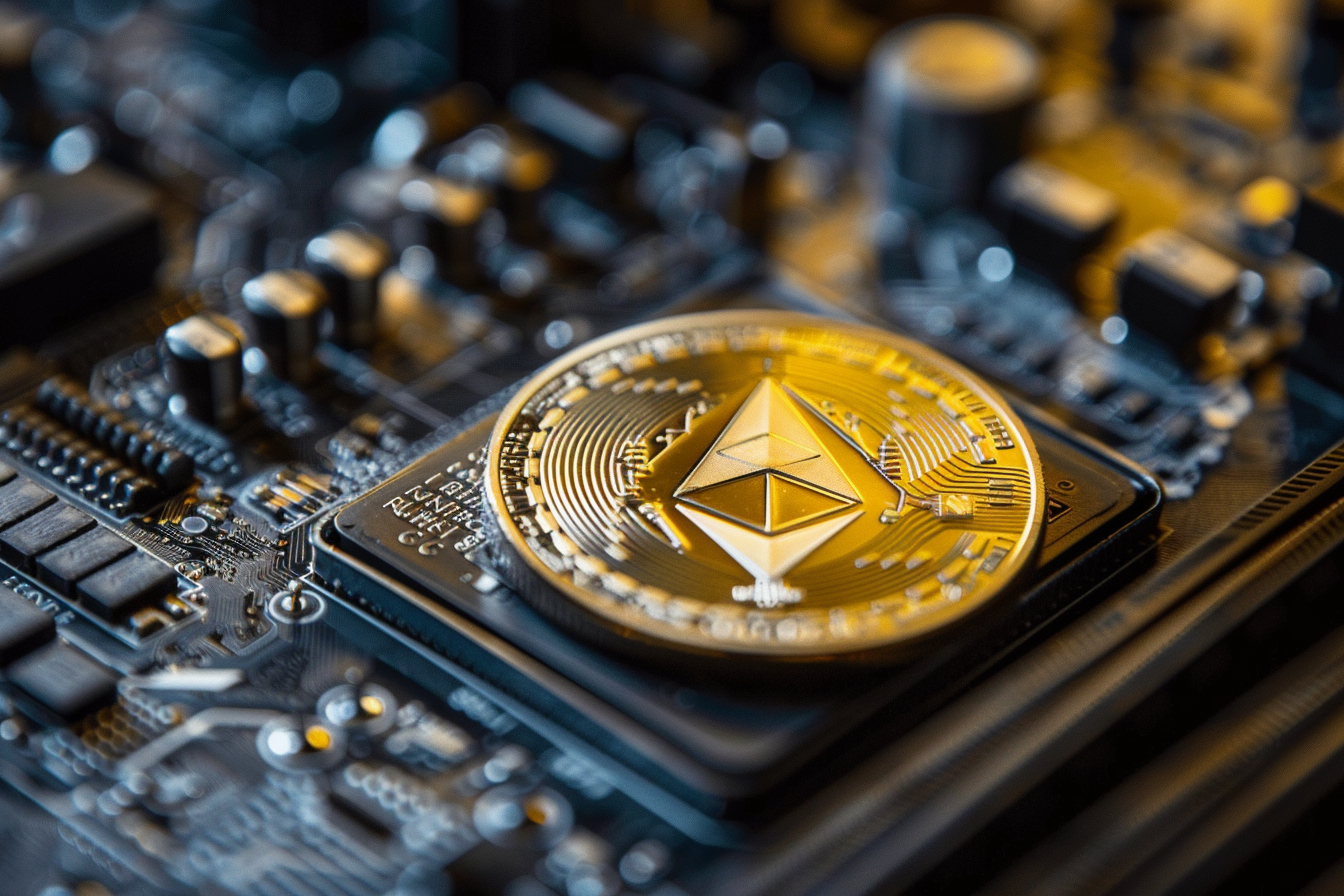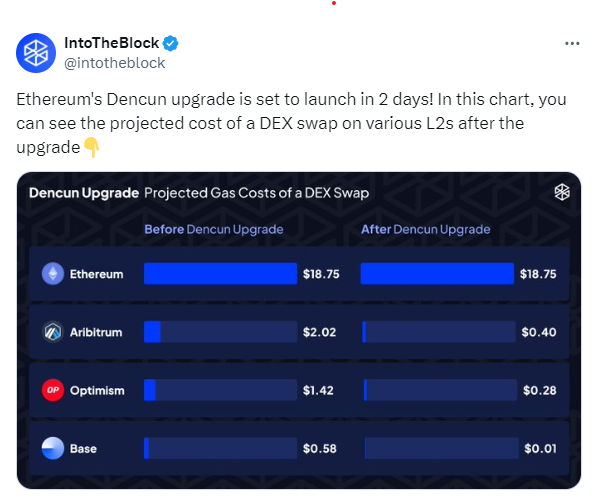Table of Contents
Ethereum, the world's second-largest blockchain by market capitalization, is set to undergo another major upgrade on March 13, 2024. On this date, the highly anticipated Dencun upgrade goes live, ushering in a new era of functionality and, most importantly, scalability for the dominant smart contract platform.
"Dencun" is a clever portmanteau of "Deneb" and "Cancun," two separate upgrade proposals that have been meticulously combined to form a single, powerful update. Ethereum's dominance in the crypto space is undeniable. Its robust smart contract functionality has fueled the explosive growth of Decentralized Applications (dApps), revolutionizing everything from finance (DeFi) to gaming (NFTs). However, a dark cloud has loomed over Ethereum's success: scalability. Transaction fees have skyrocketed during periods of high network congestion, creating a major barrier to entry for new users and projects.
This is where Dencun comes in. This landmark upgrade represents a significant step forward in Ethereum's ongoing quest to address scalability woes and solidify its position as the premier platform for decentralized innovation.
Ethereum Improvement Proposals
Ethereum upgrades are usually built on the foundation of Ethereum Improvement Proposals (EIPs). EIPs outline potential new features or processes for Ethereum. They also contain technical standards and specifications for the proposed changes, acting as a credible source for the Ethereum community. These allow network upgrades to be discussed and developed through the EIP process.
The EIPs are similar to Bitcoin Improvement Proposals (BIPs), as they play a central role in how changes happen and are documented on Ethereum.
The earliest Ethereum upgrade was Byzantium in 2017 which reduced block rewards from 5 ETH to 3 ETH and implemented new smart contract functionalities.
Constantinople and Istanbul upgrades followed in 2019. These introduced multiple EIPs that enhanced Ethereum’s efficiency, optimized transaction fees and made the network more supportive of Layer 2 chains.
The transition from proof-of-work (PoW) to proof-of-stake (PoS) was started with the launch of the Beacon Chain in 2020 and completed with the Merge in 2022. This allowed for staking of Ether, improving Ethereum’s environmental friendliness and reducing the issuance of ETH.
A full history of all Ethereum upgrades can be seen here.

The Dencun Upgrade
Dencun comes with a series of technical improvements designed to optimize Ethereum's performance with added benefits for Layer 2 networks on the blockchain.
The central feature of the Dencun upgrade is the introduction of proto-danksharding, which is contained in EIP-4844. Proto-danksharding significantly reduces data storage costs for Layer 2 rollups.
This is accomplished through "data blobs," which are holders for large amounts of data associated with Layer 2 transactions. The improvement that data blobs bring is that unlike traditional transactions, they are not executed on the main chain. Instead, they are stored briefly on the main chain with a data reference included in the transaction. Blobs are available for 18 days then dropped from the network. This decreases the computational burden on the main chain, potentially reducing the gas fees for L2 rollups.
Before Dencun, Layer 2 networks had to submit all transactions to the main chain in one chunk. This limited scalability as only a specific amount of data could be handled by the main chain. After the Dencun upgrade, L2 chains such as Arbitrum, Optimism, Base and others can use data blobs to slash transaction fees on their chain.
Benefits for Ethereum Users & Traders
The Ethereum Dencun upgrade brings several benefits to users and traders alike. According to statistics from IntoTheBlock, the gas fees for DEX swaps are projected to reduce on Aribitrum from $2.02 to $0.4. On Optimism, fees are projected to reduce from $1.42 to $0.28, and on Base from $0.58 to $0.01.

Users will also benefit from improved scalability with proto-danksharding allowing the Ethereum blockchain to handle a significantly higher number of transactions per second, reducing congestion and improving overall performance.
Layer 2 Blockchains like Optimism and Arbitrum will also see increased adoption with improved compatibility and performance, as more developers and users seek scalable alternatives to Ethereum's mainnet. Layer 2 solutions already complement Ethereum's mainnet by offering scalability without sacrificing security or decentralization. This synergy strengthens the overall Ethereum ecosystem and fosters innovation in decentralized finance (DeFi), gaming, and other dApp sectors.
Layer 2 solutions also provide a flexible scaling solution that can dynamically adjust to network demand, ensuring smooth operation even during periods of high congestion on the Ethereum mainnet.
Impact on Ethereum’s Price Action
With Ethereum breaking the $4,000 price barrier and the continued growth of Layer 2 solutions, demand for ETH is projected to grow.
A look at the on-chart indicators highlight the sustained inflow of capital and strong buying pressure, as evidenced by the Chaikin Money Flow (CMF) and Relative Strength Index (RSI) readings. This could see ETH hit a new all-time high, following in Bitcoin’s (BTC) steps.

Ethereum's Dencun upgrade represents another significant milestone in the blockchain's journey towards scalability, efficiency, and mass adoption. This upgrade will ensure Ethereum is poised to offer a better user experience while maintaining its position as a leading blockchain platform. Moreover, the enhanced compatibility with Layer 2 solutions like Optimism and Arbitrum opens up new possibilities for scalability and innovation, benefiting both Ethereum and the broader blockchain ecosystem. Buckle up, crypto world – the future of decentralized applications is about to get a whole lot brighter.







